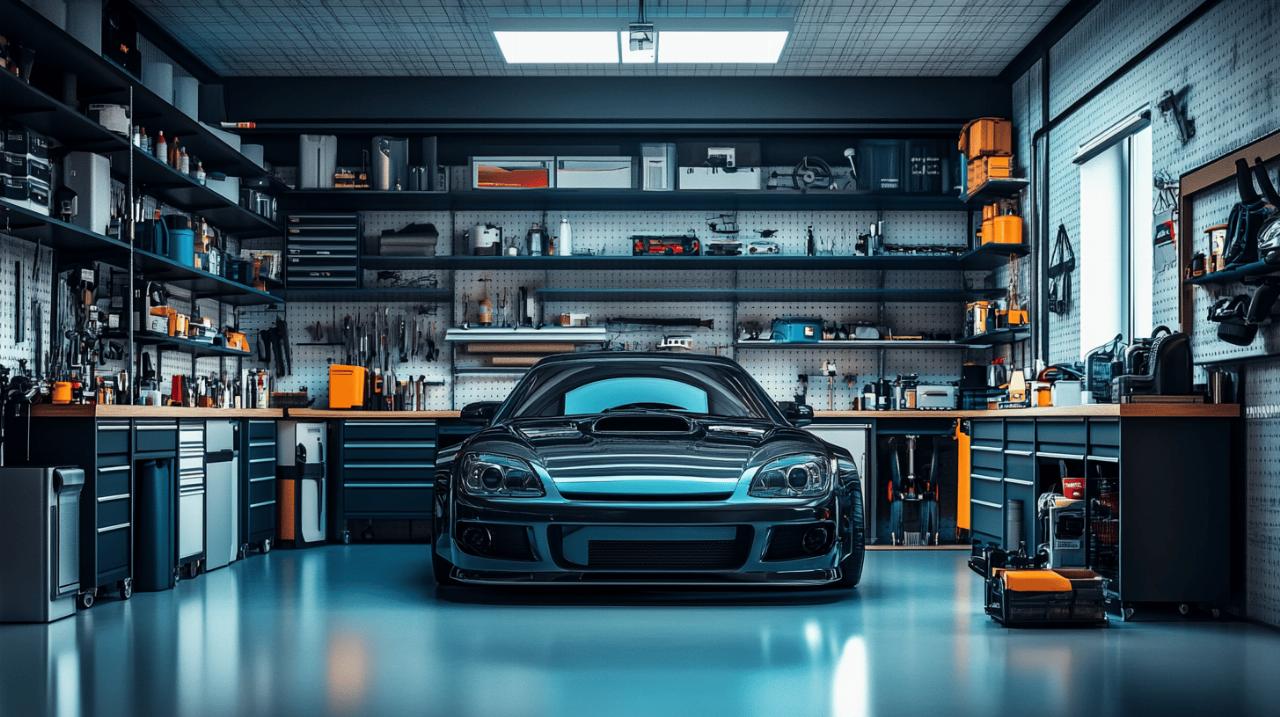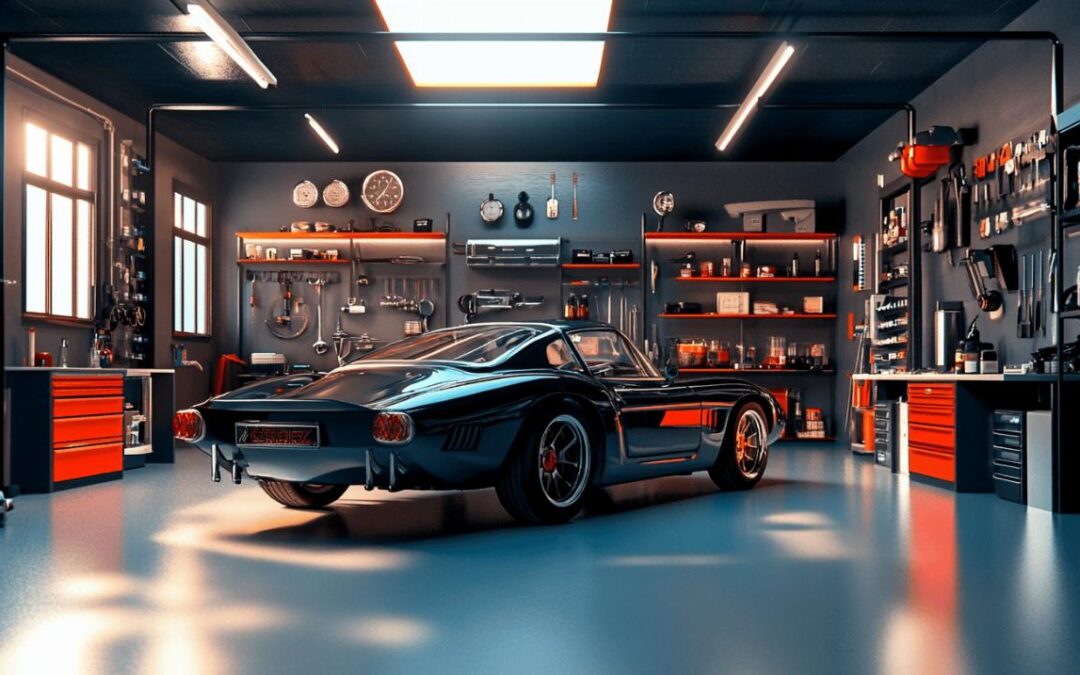Maintaining a vehicle in top condition is not just about preserving its aesthetic appeal but also ensuring its mechanical components function optimally for years to come. With proper care and attention, you can significantly extend the lifespan of your car's vital parts, saving money on repairs and replacement in the long run. Let's explore the key strategies that can help your vehicle stay reliable and efficient throughout its lifecycle.
The importance of regular maintenance
Regular maintenance serves as the foundation for vehicle longevity. Auto Health checkups, commonly known as servicing, are essential preventive measures that can identify potential issues before they develop into serious problems. These routine inspections provide an opportunity for professionals to assess your car's condition and address any concerns promptly.
Scheduling routine service checks
Adhering to a consistent service schedule is crucial for maintaining your car's health. Most manufacturers recommend a minor service annually and a major service every 2-3 years or 10,000 miles, whichever comes first. This systematic approach ensures that all components receive timely attention, from filter replacements to fluid checks, helping to maintain optimal performance throughout your vehicle's life.
Recognising early warning signs
Being attentive to subtle changes in your car's behaviour can save you from costly repairs. Unusual noises, vibrations, or a decrease in performance are indicators that something may be amiss. Addressing these warning signs immediately rather than waiting for them to worsen can prevent cascade failures where one faulty component damages others connected to it.
Proper fluid management
Fluids are the lifeblood of your vehicle, each type serving a specific purpose in maintaining smooth operation. Regular checks and timely replacements of these fluids are essential for preventing wear and extending the lifespan of related components.
Understanding different fluid types and their roles
Your car relies on various fluids to function correctly. Engine oil lubricates moving parts and reduces friction, coolant regulates temperature and prevents overheating, brake fluid ensures stopping power, and transmission fluid facilitates smooth gear changes. Each has unique properties designed for specific systems within your vehicle, making it vital to use the correct type for each application.
Optimal fluid replacement intervals
Different fluids have varying replacement schedules based on their degradation rates and the stress they endure. Engine oil typically requires changing more frequently than transmission fluid or coolant. Following manufacturer guidelines for replacement intervals is essential, as continuing to use degraded fluids can accelerate wear on components and potentially lead to system failures.
Tyre care and management
Tyres are your only contact with the road, making their maintenance crucial not only for safety but also for the health of related components like suspension and steering systems.
Correct inflation and pressure monitoring
Maintaining proper tyre pressure is fundamental to extending tyre life and improving fuel efficiency. Underinflated tyres flex more, generating excess heat and wearing unevenly, while overinflated tyres have reduced contact with the road surface. Weekly pressure checks ensure optimal performance and safety, especially considering that UK law requires a minimum tread depth of 1.6mm across the central three-quarters of the tyre width.
Alignment and rotation practices
Regular tyre rotation helps distribute wear evenly across all four tyres, extending their useful life. Similarly, wheel alignment checks prevent uneven tyre wear caused by improper angles. Both practices contribute to better handling, improved fuel economy, and reduced strain on suspension components, making them valuable investments in your vehicle's longevity.
Driving habits that preserve car components
How you drive significantly impacts the wear rate of your vehicle's components. Adopting driving techniques that reduce unnecessary stress on mechanical parts can substantially extend their service life.
Smooth acceleration and braking techniques
Aggressive driving places excessive strain on your car's engine, transmission, and braking systems. Gradual acceleration and gentle braking not only conserve fuel but also reduce wear on these critical components. Avoiding rapid starts and stops allows mechanical parts to operate within their designed parameters, minimising stress and extending their functional lifespan.
Managing stress on the transmission system
Transmission systems are particularly vulnerable to driver habits. Avoid resting your hand on the gearstick or your foot on the clutch pedal, as these practices can cause premature wear. Similarly, completely stopping before changing from drive to reverse protects the transmission from shock loads that can damage internal components over time.
Vehicle cleanliness and protection
 Regular cleaning does more than maintain your car's appearance; it plays a crucial role in preventing corrosion and preserving both aesthetic and structural integrity.
Regular cleaning does more than maintain your car's appearance; it plays a crucial role in preventing corrosion and preserving both aesthetic and structural integrity.
Exterior washing and waxing routines
Consistent cleaning removes contaminants like road salt, grit, and industrial fallout that can damage paintwork and accelerate corrosion. Applying wax creates a protective barrier against environmental elements and UV radiation, helping to maintain the paint finish and underlying metal. Establishing a regular washing schedule, especially after exposure to harsh conditions, significantly extends the life of exterior components.
Undercarriage protection against corrosion
The underside of your vehicle is particularly vulnerable to corrosion due to its exposure to road spray, salt, and debris. Regular undercarriage cleaning, especially during winter months when roads are treated with salt, helps prevent rust formation. Additionally, applying rust-proofing treatments creates a protective barrier that shields metal components from moisture and corrosive substances, extending their service life considerably.
Addressing repairs promptly
Timely attention to emerging issues prevents them from escalating into more serious and expensive problems. This proactive approach to maintenance is fundamental to maximising component lifespan.
Interpreting dashboard warning lights
Modern vehicles are equipped with sophisticated diagnostic systems that alert drivers to potential issues through dashboard warning lights. Understanding what these indicators mean and responding appropriately is essential for preventing minor problems from developing into major failures. Warning lights should never be ignored; they are designed to provide early notification of conditions that could lead to component damage if left unaddressed.
Cost benefits of early intervention
Addressing small issues before they grow into significant problems often requires less extensive repairs and prevents collateral damage to related systems. For example, replacing worn brake pads promptly costs substantially less than waiting until they damage the rotors or calipers. This preventative approach not only extends component life but also reduces overall maintenance costs throughout vehicle ownership.
Selecting quality parts and fluids
The quality of replacement parts and maintenance fluids directly impacts their performance and longevity, making careful selection crucial for long-term reliability.
OEM versus aftermarket components
When replacing parts, consider the trade-offs between Original Equipment Manufacturer components and aftermarket alternatives. OEM parts offer assured compatibility and typically maintain original performance specifications, while quality aftermarket components may provide cost savings without compromising functionality. Researching options and considering the importance of each component to overall vehicle safety and performance helps make informed decisions.
Long-term economy of premium products
Although premium parts and fluids often come with higher initial costs, they frequently deliver better performance and longer service life. High-quality engine oil, for instance, maintains its protective properties longer than budget alternatives, reducing engine wear and extending intervals between changes. This approach to maintenance focuses on total ownership cost rather than immediate expenses, typically resulting in better long-term value.
Proper vehicle storage
How you store your vehicle when not in use significantly affects the condition of its components, particularly during extended periods of inactivity.
Short-term versus long-term storage considerations
For brief periods of disuse, simple precautions like parking in a covered area and maintaining battery charge may suffice. Longer storage requires more comprehensive preparation, including fluid changes, tyre pressure adjustments, and fuel stabilization. Understanding the appropriate measures for your specific situation helps prevent deterioration during storage periods.
Protective measures against environmental damage
Environmental factors like extreme temperatures, humidity, and UV radiation can accelerate component degradation. Storing your vehicle in a garage provides the best protection, but when this is not possible, a quality car cover offers a barrier against these elements. Additionally, periodic starting and short drives during long-term storage help maintain mechanical components and prevent seals from drying out, ensuring your vehicle remains ready for use when needed.

